How to Clean Floors with Vinegar
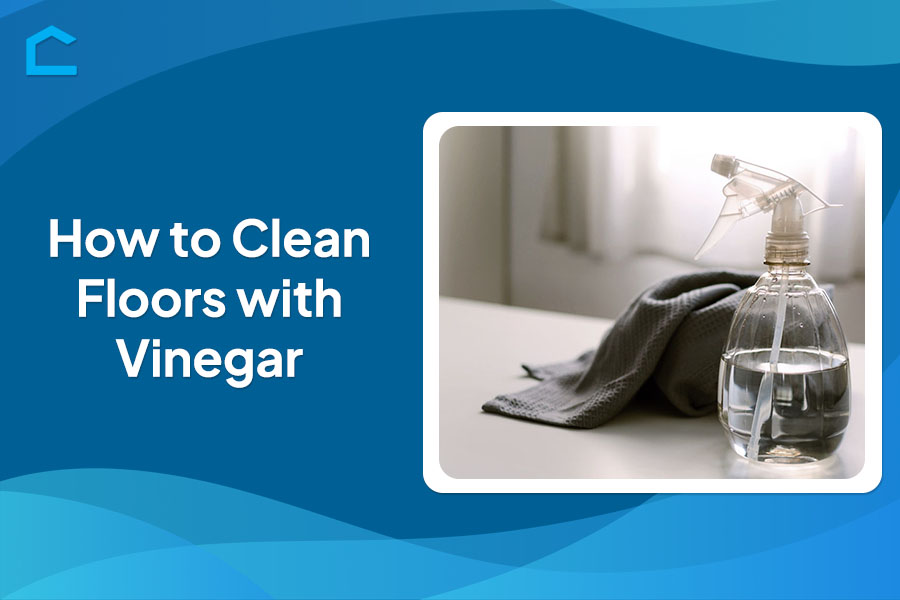
Keeping floors clean can be a constant battle, especially in high-traffic areas of the home. From muddy footprints to spills and splatters, floors take a beating daily. While many floor cleaning products are on the market, people are turning to more natural, economical solutions like vinegar. But do you know how to clean floors with vinegar?
In this article, we’ll explore the benefits of cleaning with vinegar, which types of floors it works best on, and tips for getting maximum cleaning power. Ditch expensive floor cleaners and make the switch to vinegar – you may be surprised at just how effective this humble pantry staple can be.
Get ready to learn a new, natural way to clean your floors while saving money and the environment!
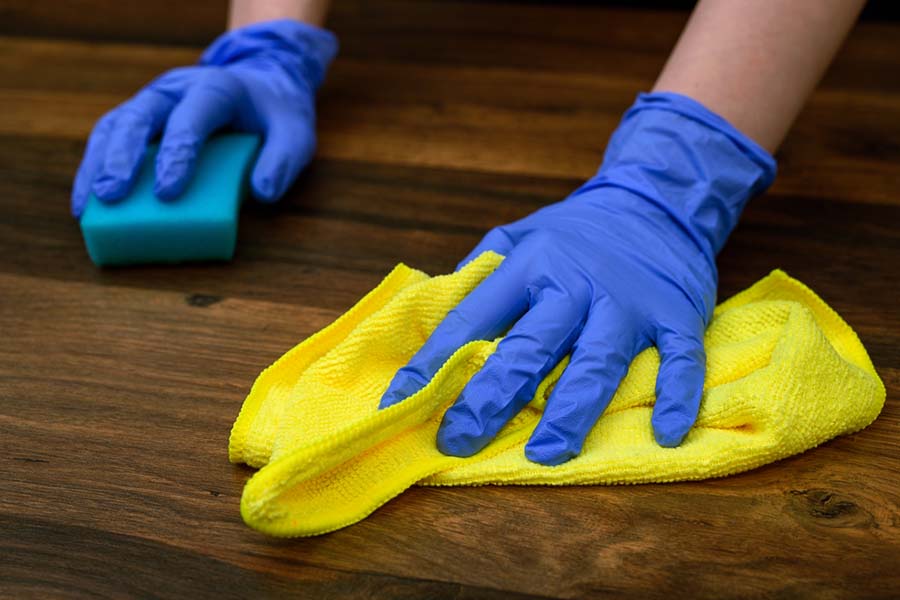
Preparing for Cleaning
Before starting your vinegar floor cleaning, there are a couple of safety precautions to keep in mind. Taking these steps will help ensure the process goes smoothly and safely.
Proper ventilation
Vinegar has a pungent smell that can be overwhelming in enclosed spaces. You need to open up windows and doors to allow for proper ventilation while cleaning with vinegar solutions. Good airflow will help dissipate the strong vinegar odor.
Protective gear
Vinegar is a gentle and natural cleaner, but it’s wise to be cautious, especially with its concentration. Protect your hands by wearing rubber gloves when handling vinegar.
If you’re mixing it with other cleaners, wearing safety goggles can shield your eyes from any splashes. Closed-toe shoes are a good idea to prevent spills on your feet.
Once you have proper ventilation and protective gear, you can confidently mix up your vinegar cleaning solution for floors. These safety measures ensure you can clean without worrying about fumes or possible irritation to your skin and eyes.
Vinegar Floor Cleaner Recipe
Creating your own vinegar floor cleaning solution is simple and requires just a few basic items. All you need is:
- white vinegar,
- water,
- a bucket or spray bottle,
- a mop or cleaning cloth and
- measuring cups
White vinegar is the main ingredient, delivering potent cleaning power. Its acetic acid content effectively breaks down grease, dirt, and grime. You’ll also need clean water to dilute the vinegar.
To apply the solution, you can opt for a traditional mop and bucket or fill a spray bottle for targeted cleaning. Additionally, having a couple of clean rags or microfiber cloths handy helps tackle stubborn spots.
Diluting vinegar with water
As a general guideline, we advise you to mix one part vinegar with one part water. This creates a 50% vinegar solution that is strong enough to clean effectively yet won’t damage floors.
Ratios for different floor types
While the 1:1 ratio is a good standard mix, you may want to adjust it slightly depending on the floor type and level of soiling. For example:
- Tile floors: Use a stronger 1-part vinegar to 1/2 part water solution to help dissolve tough grout stains.
- Hardwood floors: Use more diluted 1-part vinegar to 2-part water to avoid wood damage.
- Linoleum/Vinyl: The standard 1:1 solution is safe for these floors.
We recommend you always test the vinegar solution on a small, inconspicuous area first to ensure it doesn’t damage or dull the floor’s finish. With the right ratio customized for your floors, your vinegar cleaner will cut through dirt and leave surfaces shining.
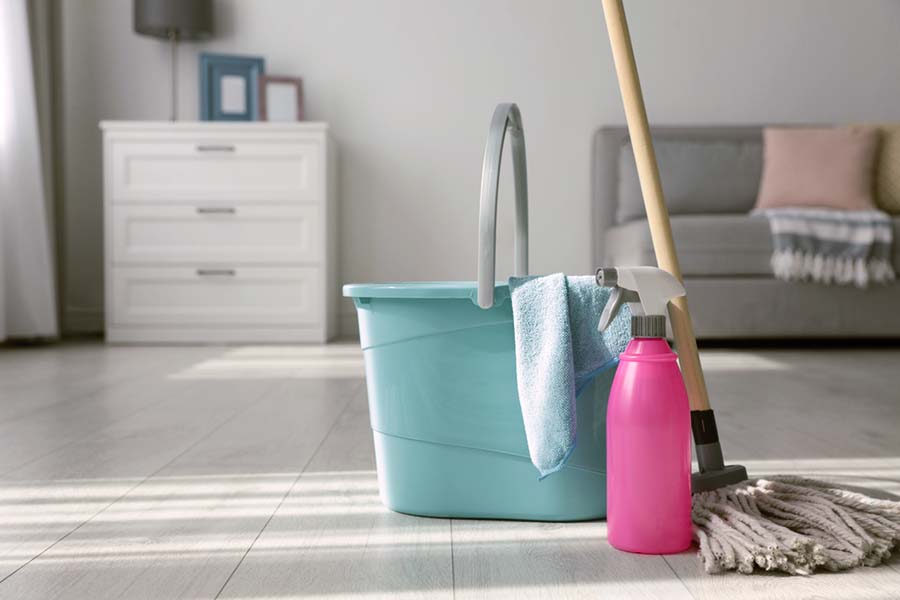
How to Clean Floors With Vinegar
To clean your floors with vinegar, start by mixing water and vinegar in equal parts. Put this mixture in a spray bottle or bucket.
First, sweep or vacuum your floor to remove any dirt or debris. Then, use the vinegar solution to mop the floor.
If there are tough stains or grime, let the solution sit for a few minutes before mopping again. Also, we advise you not to use vinegar on natural stone floors because it can cause damage.
Mopping with vinegar solution
To mop your floors with a vinegar solution, start by mixing equal parts of vinegar and water in a bucket. For a standard cleaning solution, combine 1 cup of vinegar with 1 cup of warm water. Adjust the quantities as needed based on the size of your floor area.
Next, dip your mop into the vinegar solution, making sure to wring out excess liquid. The mop should be damp, not dripping wet. Start mopping in one corner of the room and work your way across the floor in overlapping strokes. Apply moderate pressure and make sure to cover every inch of the surface.
Also, proper mopping technique is crucial for effective cleaning. Use a figure-eight motion, flipping the mop head frequently to expose fresh, clean surfaces to the floor. But avoid pushing the dirty solution back and forth, as this can spread grime and leave streaks.
Spot cleaning with vinegar solution
For targeted spot cleaning, create a more concentrated vinegar solution by mixing one part vinegar with one part water. This potent mixture is excellent for tackling stubborn stains, spills, or heavily soiled areas.
So, dip a clean cloth or sponge into the solution and wring out any excess liquid. Gently scrub the affected area, using circular motions to lift the stain or grime. Then, apply more pressure as needed, but be cautious not to damage the flooring material.
If the stain persists, you can make a paste by mixing vinegar with a small amount of baking soda. Gently rub the paste onto the stain and let it sit for several minutes before wiping it away with a damp cloth.
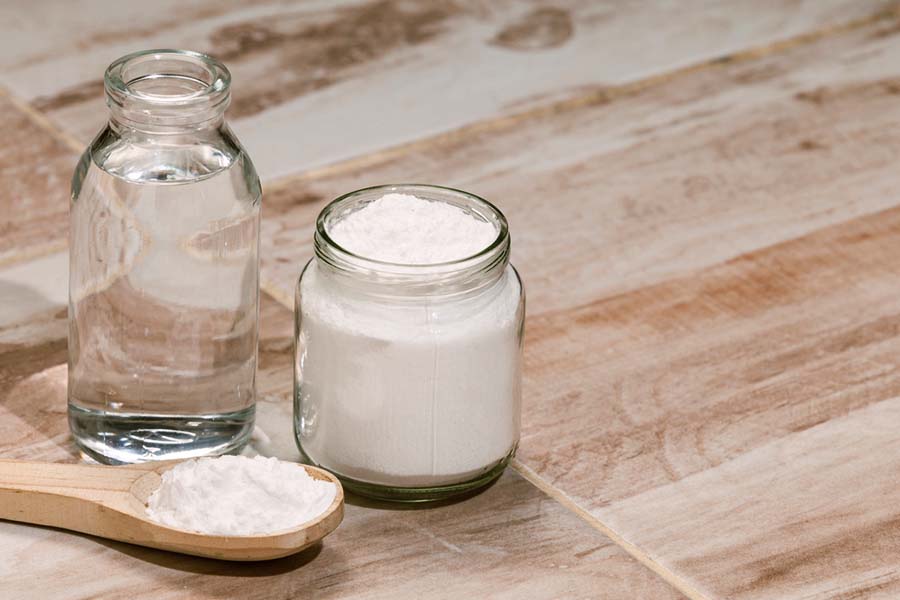
Rinsing and drying
After mopping or spot cleaning with the vinegar solution, it’s crucial to rinse the floor thoroughly with clean water. This step removes any remaining vinegar residue, which can leave a lingering odor or attract dirt if left behind.
Use a clean mop or cloth dampened with fresh water to rinse the entire floor surface. Also, pay special attention to corners and edges where vinegar solution can accumulate.
Once you’ve rinsed the floor, it’s time to dry it properly. Use a clean, dry mop or a squeegee to remove excess water, working in sections to prevent pooling. Alternatively, you can use clean, absorbent towels or a floor-drying fan to speed up the drying process.
Moreover, proper drying is essential to prevent water spots, streaks, and potential slip hazards. Ensure that the floor is completely dry before walking on it or replacing furniture and rugs.
Additional Tips and Considerations
Versatility of vinegar for different floor types
Vinegar is a versatile cleaning agent suitable for a wide range of floor surfaces. It can be used effectively on ceramic tile, laminate, hardwood, and even some types of vinyl flooring. However, it’s essential to check the manufacturer’s recommendations before using vinegar on specific floor materials, as some may be sensitive to acidic solutions.
Enhancing the cleaning power of vinegar
While vinegar alone is a potent cleaning agent, you can boost its effectiveness by combining it with other natural ingredients. For instance, adding a few drops of essential oils like lemon or tea tree can provide a fresh scent and additional antimicrobial properties. Baking soda can also be used to create a gentle abrasive paste for tackling tough stains.
Potential concerns and limitations
Despite its many benefits, there are a few potential concerns and limitations to consider when using vinegar for floor cleaning. The acidic nature of vinegar may dull or etch certain types of stone floors, such as marble or granite, over time. Furthermore, vinegar can cause discoloration or damage to unsealed or waxed wood floors.
It’s crucial to perform a spot test on an inconspicuous area before using vinegar on any floor surface. This will help you identify any potential adverse reactions or compatibility issues. If you notice any discoloration or damage during the spot test, it’s best to avoid using vinegar on that particular floor type.
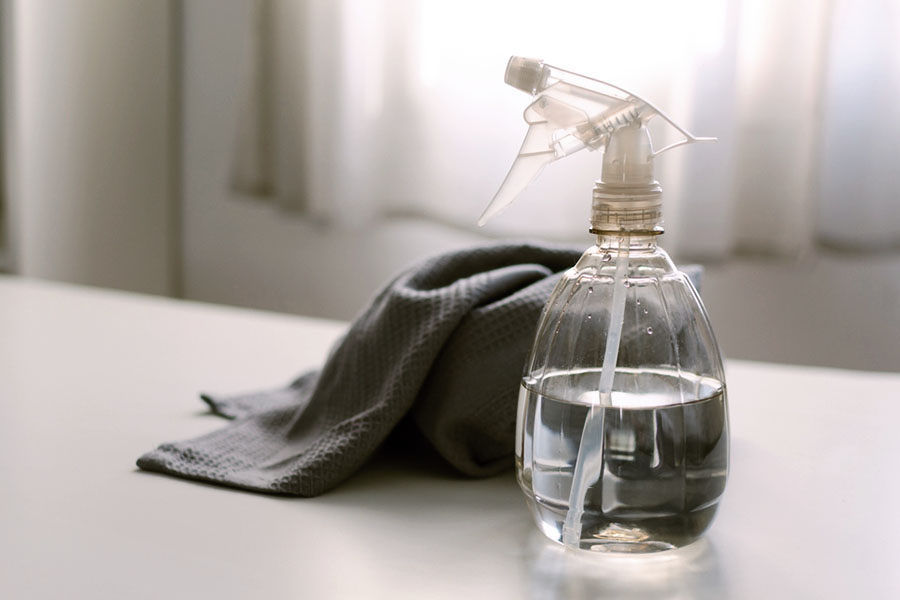
Conclusion
Cleaning floors with vinegar offers a natural, economical, and eco-friendly solution to the daily battle of maintaining cleanliness, especially in high-traffic areas. With its versatile cleaning properties, Vinegar can effectively tackle various floor messes, from laminate to tile, hardwood to linoleum, without harsh chemicals.
By following simple steps and safety precautions on how to clean floors with vinegar, you can harness the cleaning power of vinegar to achieve sparkling floors. Remember to ventilate properly, use protective gear, and customize your vinegar solution ratio based on your floor type.
With vinegar as your cleaning ally, you can say goodbye to expensive floor cleaners and hello to a cleaner home environment while saving money and reducing environmental impact. Happy cleaning!
